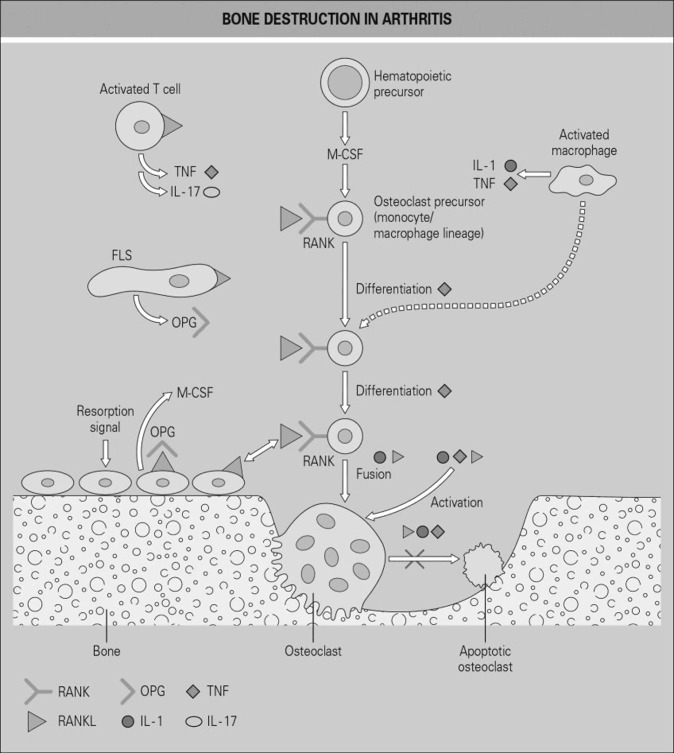Fig. 2.
Schematic view of osteoclast differentiation and the role of the receptor activator of nuclear factor kappa-B ligand (RANKL) in rheumatoid arthritis (RA). Several cell types express RANKL at sites of bone erosion in RA. These include activated T cells and synovial fibroblasts (FLS), as well as osteoblasts lining the bone surface. Production of RANKL by these cells and its interaction with the RANK receptor on osteoclast precursor cells promotes the differentiation of these hematopoietic precursors into multinucleated bone-resorbing osteoclasts. Many locally produced pro-inflammatory cytokines contribute to this process, including interleukin 1 (IL-1) and tumor necrosis factor (TNF) derived from activated macrophages and T cells, T cell–derived IL-17 and macrophage colony-stimulating factor (M-CSF), which promotes expansion of the precursor cell pool. Osteoprotegerin (OPG) is the naturally occurring decoy receptor for RANKL, which is produced by several local cell types and blocks the biologic functions of RANKL. Pro-inflammatory cytokines also play a role in fusion (multinucleation) and activation of osteoclasts, as well as inhibition of their apoptosis. (From Gravallese EM, Monarch PA. “The rheumatoid joint: synovitis and tissue destruction.” In Hochberg MC, Silman AJ, Smolen JS, Weinblatt ME, Weisman MH, editors. Rheumatology, 6th ed. Philadelphia, PA: Elsevier; 2015. © Mosby, an imprint of Elsevier Ltd.)

